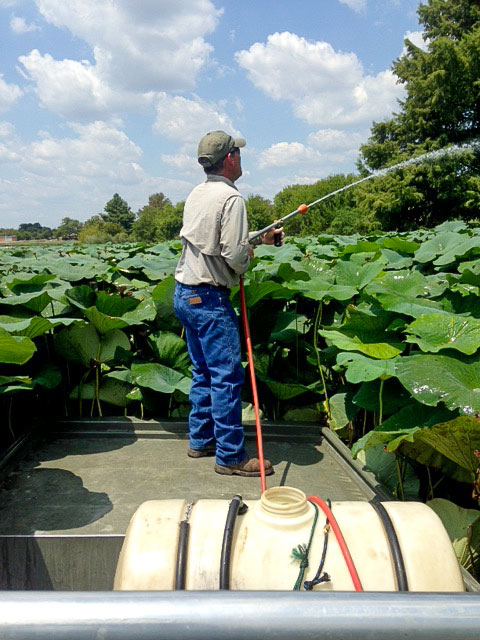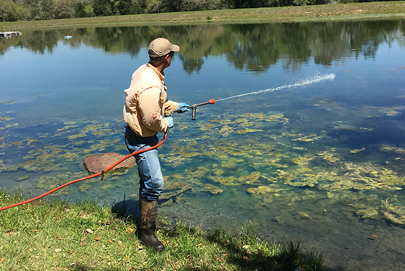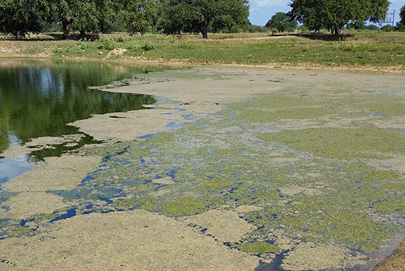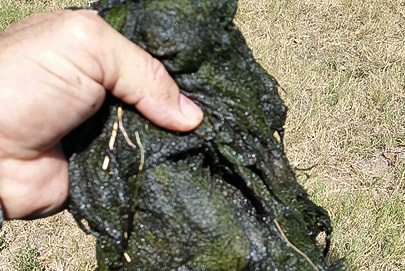Maintaining a balance of aquatic plants is essential to pond health
Aquatic plants are an important part of a pond or lake ecosystem. Plants provide nursery cover for small fish, oxygen when the sun is shining, shoreline and sediment stabilization, and are part of the food web, However, when plant densities get high, they can be a detriment to the health of a lake. Too many plants can hide small fish, impairing feeding efficiency of predators, such as Largemouth Bass. Too many plants can also cause low oxygen and possibly fish kills.
There are two basic types of aquatic vegetation – vascular plants (rooted plants) and algae. Vascular plants have a vascular system and roots, similar to many land plants. These plants are generally classified by how they grow – submerged, emergent, and floating. A few different submerged plants include the pond weeds, Hydrilla, and coontail. Examples of emergent plants include cattail, bulrush, primrose, and alligator weed. Examples of floating plants are duckweed, water meal, and water hyacinth.
Some vascular plants are exotic (not native to an area) and often have little or no natural predators. Some examples of exotic species that are a problem in Texas ponds include alligator weed, Hydrilla, water hyacinth, and water lettuce. For most pond owners, it is very important to know when an exotic species is present because they can quickly spread and impact an ecosystem.
Algae is also one of the most important plants that occur in ponds. Algae are unicellular plants that do not have roots or a vascular system. Many algae exist as single, microscopic cells that suspend in the water column, giving the water a green or sometimes brownish color. These are known as phytoplankton and they are a very important basis of the food web. Phytoplankton are fed upon by tiny organism called zooplankton. Zooplankton are fed upon by newly hatched fish (fry) and minnows and sunfish throughout their life. When growing fish, it is important to have a certain level of plankton to support the food web.
Other types of algae grow in colonies and form balls or filaments. These are known as filamentous algae. Filamentous algae can grow on the bottom of a pond or floating as colonies. Another type of colonial algae is Chara (also known as musk or skunk grass). Chara look like a rooted plants, similar in form to coontail, but is a colonial algae. Unlike phytoplankton, colonial algae has less value as food, but can provide important nursery cover for small fish.
Maintaining a balance of differ types of plants can be healthy for a pond. However, it is very easy for plants to become excessive, causing fishery management and water quality problems and can impair use of a pond. In general, it is best to address possible aquatic plant issues early in the growing season, before they become a problem. There are a range of plant management options, depending on the specific circumstances. These include mechanical removal, water level manipulation, chemical control, shading, and Grass Carp.
If herbicides are considered as a control option, it is important to know that laws regulate the use of aquatic herbicides. Certain waterbodies may require a permit from one or more agencies before aquatic herbicides can be applied. If Grass Carp are considered, a permit to stock the fish will be required through the Texas Parks and Wildlife Department. If you think you might have an aquatic plant problem, it is important to have the plant identified and seek consultation with somebody experienced in aquatic plant control.

Call 512-667-4275 or 979-243-4148 for more information.

Spraying Lotus from the shore

Filamentous Algae

Lungbya
